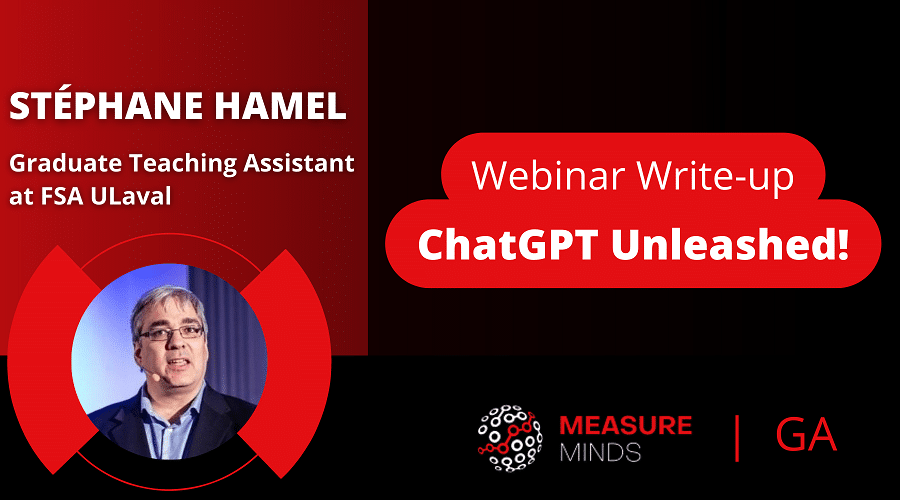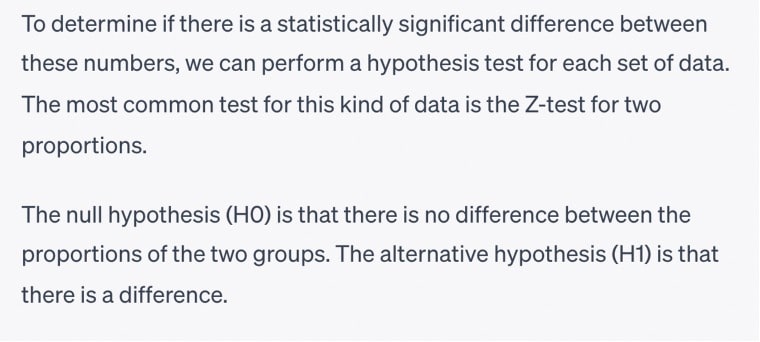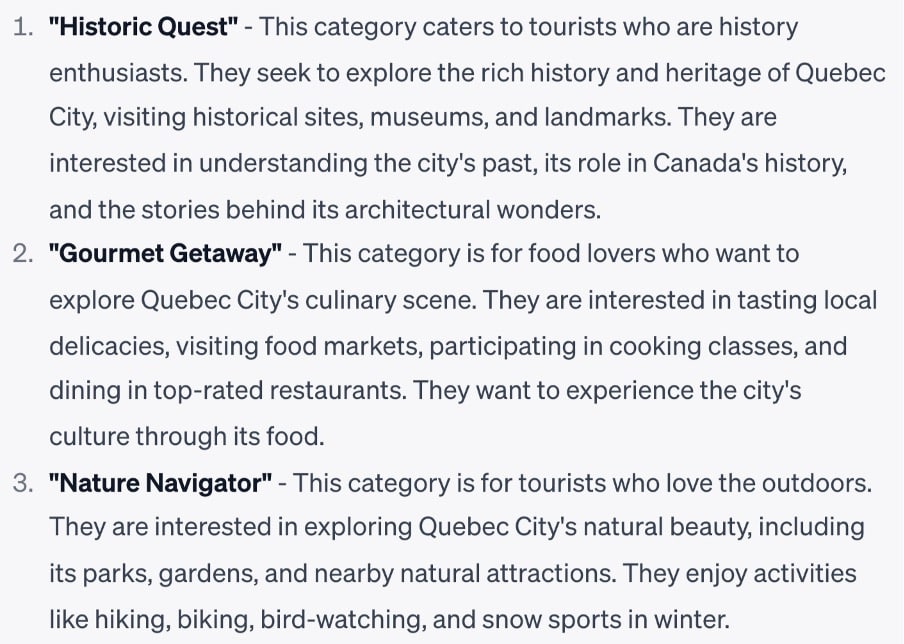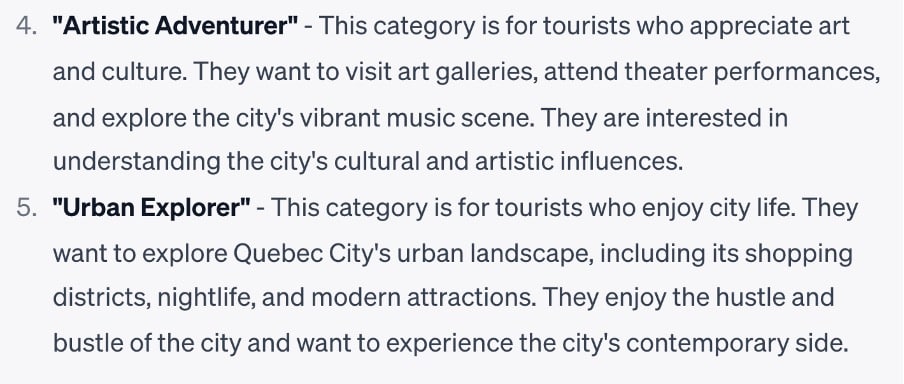
ChatGPT for Digital Analysts | ChatGPT Unleashed!
Unless you’ve been living under a rock, you’ve probably heard of Chat GPT. It’s the talk of the town in the business world with the potential to help with language generation, digital analytics, and even to Improve SEO.
But how can you make the most of the tool? Let’s find out!
This is a write-up of the talk given by Stephane Hamel at GA4ward MKIII. You can find his slides here, and the recording is below:
What is ChatGPT?
If you’re reading this article, you’re probably already familiar with the Conversational AI Chat GPT. For those that are unsure, it’s a generative pre-trained transformer, trained on a ton of publically available data. Just to give a sense of scale, ChatGPT3.5 was trained on 570 GB of data. It’s the largest language model, with 175 billion parameters.
The best analogy we can make for Chat GPT is that a human brain has about 100 billion connectors. GPT 3.5 has 175 billion connectors. GPT 4, the latest version is even more powerful.
The reason Chat GPT is talked about so regularly is that it’s used in a lot of other products. This ranges from gaming AI to chatbot recruiters.
How does it work?

As mentioned, ChatGPT’s language generation is fed on training data. This allows it to carry out classification. This means it looks for similarities in data. It tries to work out the relation between different search terms.

Chat GPT’s answers come from the likelihood of the next term. A structure is created, and based on that, answers are formulated. Some of these answers can be quite astonishing.
What about prompt engineering?
You’ve likely heard the term ‘prompt engineering’. It’s a method to help AI-based language models to answer questions and generate content in an optimal and contextualised way.
There’s been talk of people earning $300,000 simply by prompting ChatGPT. Well, it’s probably best to get that idea out of your head. Yes, we need to know how to correctly use prompts, but the tool is unlikely to make you rich.
There’s no magic trick
On platforms like LinkedIn, there are a ton of posts titled something like this ‘10 Amazing Prompts to Use In Chat GPT’. These articles sound great, but sadly there is no magic trick. You need to understand the tool and develop your own skills.
Beginner level
When people start with ChatGPT, they tend to use it for very simple tasks. Prompts might include
- Correct this text.
- Translate this text.
- Summarise (these) text(s).
- Rephrase this text.
There is a limit of 25,000 words for input/output in ChatGPT. The tool works for long conversations, but be mindful of this limit.
Grammatical Corrections

Somebody carried out a test to prove how powerful ChatGPT can be. They used a document that contained complex grammatical rules, in different programs. The corrector in Microsoft Word picked up only 15% of errors. ChatGPT, on the other hand, picked up 95%. Not only did it show the errors, but also, it explained them.
So, to put it simply, ChatGPT is like a colleague that never gets tired of repetitive or stupid questions.
Impact of productivity

There’s very little research that has been done to look at the impact of using ChatGPT in the workplace. One a/b test people that had higher education degrees, For a given task, brainstorming typically took up 25% of the time. The rough-drafting took 50%, and editing another 25%.

When ChatGPT was used, there was a marked difference. Now 20% of the time was spent brainstorming, 30% rough-drafting, and editing 40%. In other words, the majority of the time was taken up by improving the document itself.
Not only this, but 23% of the time, respondents actually replaced their own answer with ChatGPT’s response. A further 25% of the time included editing based on Chat GPT’s feedback.
So, for the same amount of time, we have a choice. Either we make a task faster for the same level of quality, or you take the time that you saved and produce better results.
Example GPT queries

You might use ChatGPT to ask for:
- Excel formulas.
- JavaScript codes.
- Python R.
- HTML.
- Regex.
- SQL requests.
GPT won’t always be perfect, although it’s getting a lot better. Generally, the result will be very close to what you want.

If you’re looking to generate code, you can use the GitHub Copilot. Instead of going of GitHub and finding someone’s code using copy and paste, you can be creative and make code for your own needs. You can also provide copilot with code, and ask for an explanation of what it does.
Using ChatGPT for digital analysts
If you’ve subscribed to ChatGPT Plus, you’ll have access to plugins. These make the tool very powerful. Eventually, you’ll be able to give GPT CSV files, code, or other forms of data, and ask questions. This opens up a variety of use cases. For example, using ChatGPT for marketing or digital analysis.
Examples of analysing data in ChatGPT
1. Use ChatGPT to test data for statistical significance
Let’s dive into some of these use cases.
A while ago, a student asked for an explanation about statistical significance. We put some numbers into ChatGPT and asked for an explanation.

This is the prompt that we asked for. The key here is to ‘explain step by step for digital marketers’. Obviously, we’ll get a different answer than if we asked for an explanation for statisticians.


Firstly, GPT looks at the data before providing an explanation of a Z-test.
 We weren’t quite satisfied with this result. We asked for it to show the formula for the Z-test, as well as a table summary.
We weren’t quite satisfied with this result. We asked for it to show the formula for the Z-test, as well as a table summary.


GPT provided the results shown above.


We were also given an explanation of the results and a conclusion.
2. Use ChatGPT to understand and explain data concepts to stakeholders
Let’s look at another example using conversational AI. You can use ChatGPT to explain a concept.

This is a generic prompt that you can reuse again and again. Here, we’re telling what we want GPT to do, and the results that intend to receive. We’re looking for a tool to ‘generate clear, accurate examples for students of concepts’. We’re asking for the tool to provide two questions, and clear answers using specific examples.

Here’s GPT’s response to the first part of our query. The tool asks us two questions.

We respond by saying that we want the tool to explain 1st-party data for a director of marketing.

We’re now presented with the three examples we requested. This makes a huge difference in helping people to understand concepts.
3. USe ChatGPT to create digital analytics presentations or content along with visuals
We all know Tim Wilson, who presented at Superweek about time-series analysis. Bear his name in mind, as we’ll come back to it in a moment.
This time, we’re using some different plugins. We’ll be focusing on Wolfram Alpha, a plugin suited for statistics and mathematics.

We’re using Wolfram to explain a concept. We want GPT to include techniques, caveats, and cautionary tales. Most importantly, we want it to do so in the style of Tim Wilson presenting at Super Weeks. We want answers for an audience of digital marketers. Results should be accompanied by illustrations in the style of Edward Tufte.

The tool went ahead and gave us some examples. Now, we can’t say for sure whether Tim Wilson would be happy with these answers. But it does further underline why ChatGPT for marketing is so useful.

But, as you’ll notice above, we didn’t get all the answers we wanted. Chat GPT was unable to provide the illustrations we requested.


Instead, we can go back and ask Wolfram to visualize the concepts for us. We’re given a visualization of a random time series

We’re also given an explanation of the time series.

Finally, we went back and asked ‘What would Time Wilson say?’. We’re given a script pretending to be Tim Wilson that gives a great explanation.
4. Use ChatGPT to conduct market research
In marketing, we often need to do market research. There are lots of ways we can use Chat GPT to do this.

This time, we’re asking GPT to provide us with some information relating to tourism in Quebec. We want simple explanations of five different underlying needs related to tourism categories. We also want a catchy name for each category.


And just like that, GPT provides us with five different profiles for tourist personas. We asked for five, although we could ask for as many as we wanted.

We’ll stay in the vein of tourism with another prompt. This time we ask GPT to assume the role of an expert in British, French, and Italian audiences.



GPT now tells us a little about each of these audiences. Of course, we need to be careful how we interpret this data. Bias can be introduced into results, potentially giving controversial answers ‘all French people act like this, all British people do that’.
For example, you’ll notice above that for Britain it talks about food and drink. For France it talks about gastronomy, suggesting a higher class. Italy, we see ‘Culinary Experiences’. These are biases we need to watch out for in our answers.
4. Use ChatGPT to identify KPIs
Now let’s look at chatGPT for digital analytics, and how to identify KPIs.

In this example, we’re referring to David Parmenter who wrote a lot of books about KPIs. In his books, Carpenter suggests a number of attributes to define a KPI. These included a good name, description, a clear calculation, etc.
Based on David Parmenter’s writing, we’re asking for a table of data relating to a tourism website. We’re feeding in some training information based on what Carpenter has said and giving an indication of what GPT needs to look for in Parmenter’s book.

This is a section of the results that GPT presented us with. We’ve got three KPIs, website traffic, user engagement, and lead generation.
It isn’t perfect, but It’s a good starting point. Going back to the research we looked at earlier, think about the amount of time it took to produce a draft. Here, using a simple prompt, ChatGPT has produced a draft in seconds.
5. Use ChatGPT to run quick digital analytics audits
The following example was built using the web browser plugin. Initially, when using ChatGPT for marketing, we were limited. ChatGPT didn’t have direct access to the internet, reducing what we could do with the tool.

Now, thanks to direct internet access it can help support our data storytelling. In the above example, we’re asking the tool to look at marketing tags on a webpage.

As instructed, GPT has produced a list of tags on the Quebec Tourism webpage. It’s a simple and quick way of running an audit.
6. Use ChatGPT to conduct privacy audits for digital analysts
Continuing in the same area, let’s look at how you can conduct a privacy audit using conversational AI.

This time, we’re telling ChatGPT to assume the role of a digital marketing and analytics expert. We want it to highlight any areas on a website that might breach GDPR regulations.
We’re also giving the tool additional information ‘Do not self-reference, do not explain what you are doing, do not makeup anything’.

The tool then gives a summary of the privacy policy – a handy feature when you have 45 pages of policies to read.

ChatGPT now knows more about the context, so we can go a step further. We can ask that the tool turns the privacy policy into something closer to Apple’s privacy labels.

We’re given a different type of summary. This contains the data type and details about whether it is mentioned in the privacy document.
What we need to remember…
ChatGPT is like a know-it-all brother-in-law. We listen politely, but have to check everything he says! Remember, GPT is not an encyclopedia, it doesn’t hold the truth about everything. It’s up to us to make sense of the information it provides.
And to reiterate what we said earlier, there’s no magic trick to prompts. If you provide the structure and give clear instructions, you’ll get the results you need.
Versatile and reusable interactive prompts with JSON
One interesting development with Chat GPT is the use of the JSON format to create prompts. Earlier, we showed a prompt structure that you can reuse. That was to ask two questions, list a topic, and specify an audience. But you can create a more complex JSON format with the specifications of what you want to do.

The image above shows one interesting example. For teaching, you can specify the grade that you’d like to teach at. You can list a communication style (formative or informative, more direct, etc). You can also list the topic and the length of the output.
This tool is particularly useful in academia, as you can create course outlines, including module topics. You can even create the exercise questions. It’s likely we’ll see this tool used in lots of different ways.
Improving factuality and reasoning in the language models debate
We know that when we ask something in Chat GPT, the answer won’t always be perfect. Luckily, there are steps you can take to improve the result.
By using two chat GPT windows, you can ask the same question and compare results. You can show results from one instance to another, and instruct the tool to find an agreement. Eventually
the two instances of GPT will agree on an answer.
Is GPT-4 a good data analytics?

Is using ChatGPT for digital analytics the way forward? Using GPT, two simulated analysts were put up against professionals. One was a senior analyst whilst the other was a junior analyst. The two were asked to complete a series of tasks by looking at data and creating visuals.
As you can see from the table above, after completing 10 tasks, senior and junior analysts and the simulation had the right answer. In some cases, the chart that was created was slightly better with the senior analyst. In terms of end results, all analysts received the same score.
Where we encounter a difference is in the amount of time taken to complete a task. The junior analyst took 633 seconds, whilst ChatGPT took 45. The senior analyst took 645 seconds, whilst ChatGPT took 49. In both cases, ChatGPT completed tasks significantly more quickly.
In terms of data analysis, for the junior analyst, ChatGPT was able to provide more in-depth explanations about what was going on. Again, there was a marked difference in the time it took to generate results. Compared to the junior analyst, GPT scored considerably higher for complexity. The AI scored 2.20 compared to 1.68.
So, ChatGPT will sometimes give better and quicker results. Those that have a lot of experience will gain less in terms of incremental quality, than those who have less experience. In other words, the playing field is elevated for everyone.
FutureTools.Io
FutureTools.Io is a great website for keeping abreast of new AI tools. ChatGPT is mostly text content, if you want to create videos, audio, or any kind of content, you’ll find an app on future tools.
Caveat: Not all the tools are good! It’s worth starting with GPT as a foundation and finding more specialised tools after that.
Midjourney
We asked ChatGPT what it would look like if it had to represent itself as an image. It responded that the ‘image should display a sense of interconnectedness, intelligence, and creativity.

We put this prompt into the image generator Midjourney and the above image was generated.

Cheat sheet: anatomy of a good prompt
Always provide context, specify the desired information, and what output you want. Next, explain what needs to be done and establish any rules and constraints. That is the basic structure of a prompt. The more of these elements you provide, the better the result you’ll get.
The best thing about ChatGPT is that it will memorise the context. For example, if you start with a question about KPIs on a certain website, GPT will continue to remember.
Note: If you start with a new topic, create a new thread so you can keep the history of your conversation.

Don’t be afraid of iterating with your questions and asking for additional information. Avoid leading questions. The tool will give you the answer you want rather than what you need. You can always ask for a more detailed explanation, and remember to validate your information.
In Summary…
ChatGPT is just another complimentary tool, just like Google Search GitHub, or your chosen SEO tools! Give it a try and you’ll see how powerful the tool is. Find ways in your daily practice to integrate the tool. Just be aware of the caveats, limitations, and privacy risk implications.
Don’t give the tool any personal information – ChatGPT will use your prompt to continue to train itself (this can be switched off). It’s not a good idea to provide confidential information about your company.
It’s to our advantage to explore the capabilities of ChatGPT and other AI tools. By doing so, you can increase and enhance the quality of your deliverables. Just remember, AIs are only complimentary tools. They can’t replace your expertise, judgment, or professional rigour. The winners will be those who can apply the insights from AI in the context of their work.
About Stephane Hamel
Stephane Hamel, a veteran in the realm of digital marketing, analytics, and data privacy, has a track record spanning over thirty years, shaping and steering the industry with his groundbreaking methodologies, tools and sometimes controversial ideas which earned him significant recognition. As a passionate educator, Stephane has disseminated his wealth of knowledge to thousands of students worldwide. A pioneering adopter of ChatGPT in his teaching courses, his forward-thinking approach has spurred media interest & cementing his status as a leading voice in incorporating generative AI within academia.

- GTM Tag Diagnostics: Check the Quality of Your GTM Container - 03/07/2024
- Adobe Launch vs Google Tag Manager: GTM vs DTM - 01/07/2024
- The Future of GA4: Where do we go From Here? - 25/06/2024